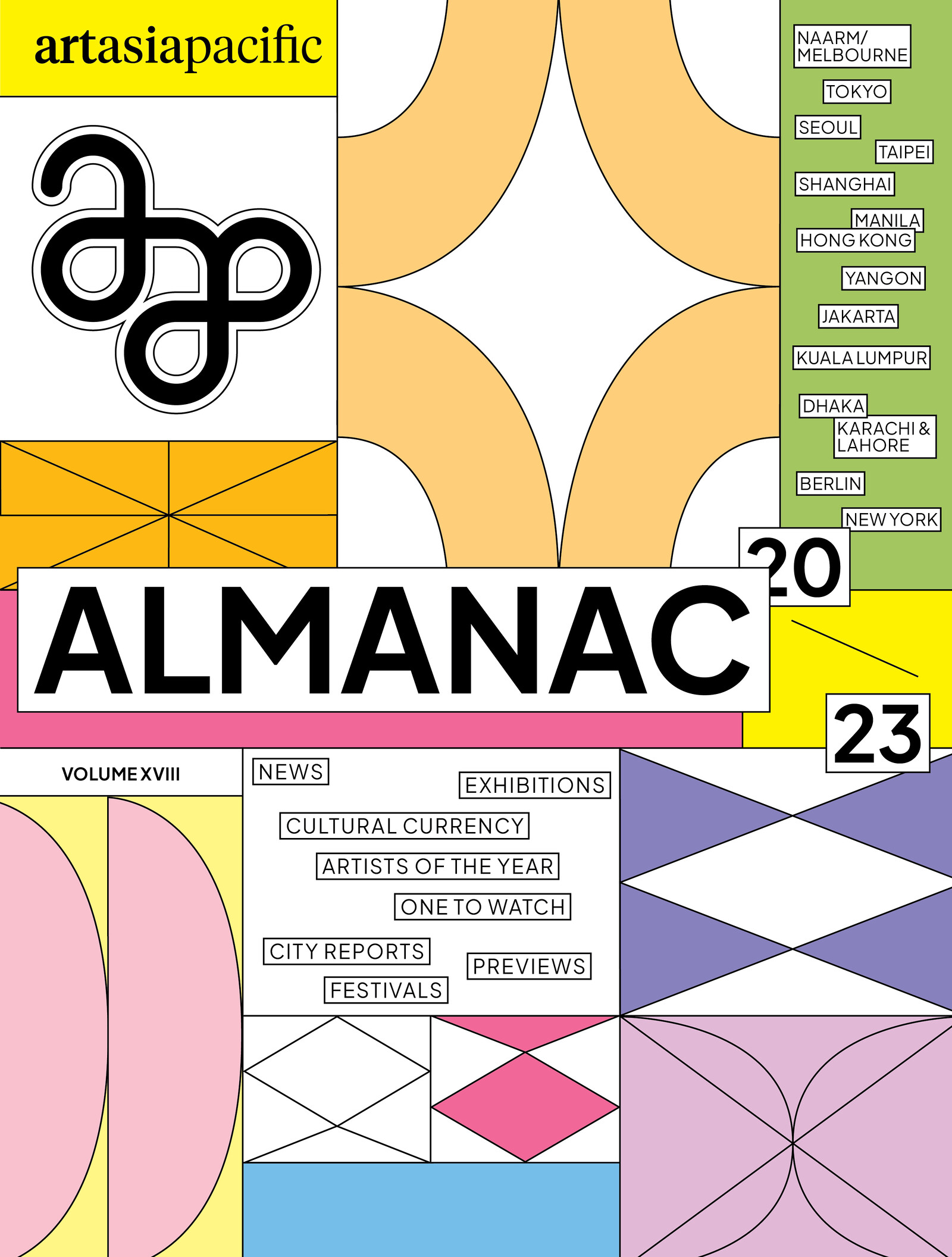After three years of upended reality, nearly every country in the world has finally pushed ahead with the resumption of what we remember as regular life. In some places, this transition came gradually while in others substantial restrictions on movements and gatherings had been unwound. Whether ecological or technological, economic or infrastructural, our global society is reuniting and refocusing on the future.
Throughout this 18th edition of the ArtAsiaPacific Almanac, we observe the year of transition as it played out in the fields of contemporary art and culture across the globe, and we look ahead at 2023 as a time for renewed efforts. In our 14 City Reports, we hear from artists, writers, and curators who have been closely following events in the places where they live and work. From Seoul, AAP’s desk editor Andy St. Louis reports on Korean art’s moment in the commercial limelight. Our correspondents Beverly Yong and Rachel Ng in Kuala Lumpur offer an upbeat assessment of how the pandemic motivated art organizations to reach new audiences beyond the art community. From Jakarta, Chabib Duta Hapsoro reports on how Indonesia’s efforts to decentralize funding away from the capital region are proving difficult in reality, while Quddus Mirza reflects on the year in art amid devastating floods in Pakistan.
Among the City Reports we speak with artists whose works address urgent issues. Associate editor Pamela Wong caught up with the new-media artist collective Dumb Type, who represented Japan at the 59th Venice Biennale, about their reunion and new projects, while assistant editor Nicole M. Nepomuceno conversed with Pio Abad about his monographic exhibition held in Manila amid a hotly contested presidential election in the Philippines. In Hong Kong, associate editor Tiffany Luk sat down with Sharon Lee to hear about her photo-based projects reflecting on changes in the city, while deputy editor HG Masters spoke with Munem Wasif about his long-term engagement photographing and filming in Old Dhaka and the evolution of Bangladesh’s capital.
In the News section, we compiled the major comings and goings of 2022—from new art museum expansions to unfortunate closings, new hires and recent departures, big awards, and ambitious future plans. Our Cultural Currency section reflects on the rocky sophomore year for NFT marketplaces, the return to large-scale art fairs, and the sudden popularity of “ultra-contemporary” artists at major international auctions. In Exhibitions of Year, we highlight memorable favorites from Seoul to San Francisco, while the Festivals section recaps a major year for biennials in Asia and for Asian nations at the 59th Venice Biennale. Our Artists of the Year showed widely at these major international events, staged ambitious exhibitions, and won big awards: Ali Cherri, Jes Fan, Mire Lee, Lu Yang, Tammy Nguyen, and proppaNOW.
This sense of 2022 as a year of transition is reflected in the design for the 18th edition of the ArtAsiaPacific Almanac, with the progression of changing colors, alternating shapes, and shrinking margins seen through the interior pages, as conceived by our art director Heesun Seo and designer Jeremy Wai Yee Leung.
The ArtAsiaPacific Almanac 2023 would not be possible without the generous support of: Burger Collection, Jean-Marc Bottazi, Nicola Chu, CL3 Architects, Kukje Gallery, Silverlens, Soluna Fine Art, Simon Suen Foundation, and Sunpride Foundation. As always, we remain grateful to the many people who support ArtAsiaPacific throughout the year, including the contributors and organizations that share their time, thoughts, knowledge, and information with us. After several challenging years behind us, we look forward to more reunions and new friends in 2023.
A digital edition of the full AAP Almanac 2023 is now available for purchase on Zinio, Google Play, iTunes, and Magzter.


